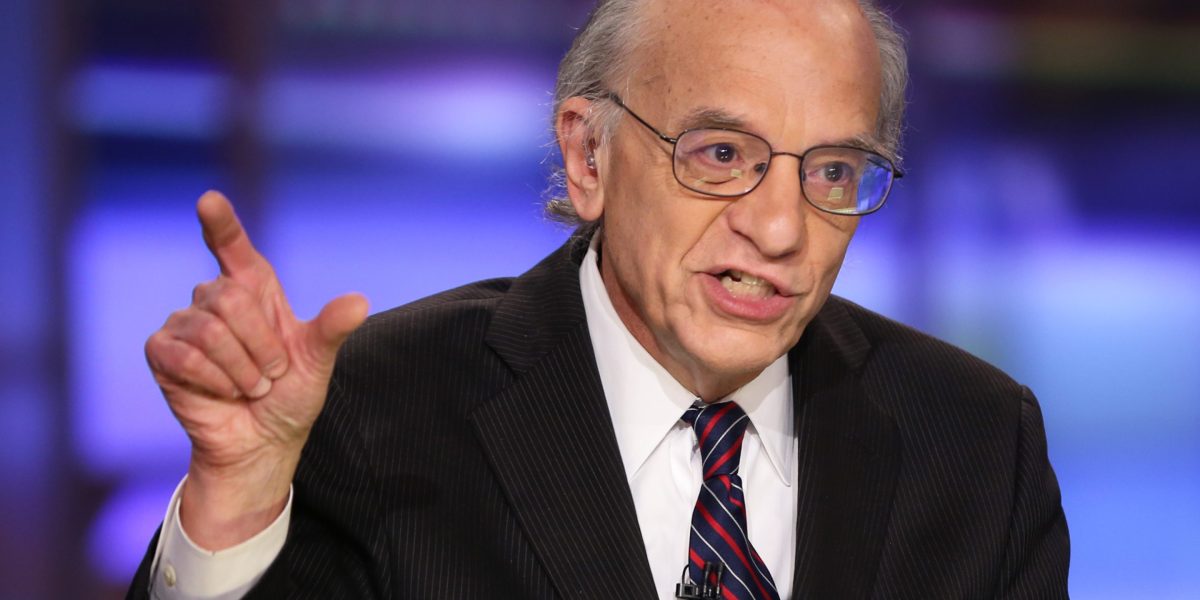An emergency Fed rate cut of 75 basis points is needed now, Wharton’s Jeremy Siegel says
Another cut of 75 basis points should come at the Fed’s next meeting in September, he added.


Now, economists are calling on the Federal Reserve to cut rates as soon as possible—with some warning it may be too late to avoid a recession.
Jeremy Siegel, professor emeritus of finance at the University of Pennsylvania’s Wharton School and senior economist at WisdomTree, told CNBC on Monday the Fed should institute an emergency rate cut of 75 basis points immediately. He also thinks the Fed should cut rates another 75 basis points at the September policy meeting.
That would lower the fed funds rate to a range of 3.75%-4% from the current level of 5.25%-5.5%, which is the highest rate in 23 years.
“The fed funds rate right now should be somewhere between 3.5% and 4%,” Siegel told CNBC. “The market knows so much better than the Fed, so they’ve got to respond.”
While an emergency rate cut isn’t unprecedented, it would be unusual—and it’s mostly happened during severe economic downturns. There were two emergency rate cuts in 2008 during the Great Financial Crisis, one in January and one in October. In response to the COVID-19 pandemic, there were also two emergency rate cuts in March 2020.
Siegel said he has “very simple logic” for his position on calling for an emergency Fed rate cut. At the June meeting, the Fed’s survey of economic projections showed that policymakers see the fed funds rate eventually settling at 2.8% over the long term. Those projections also assume the unemployment rate will be 4.2% over the long term with inflation at 2%.
“Well, on Friday, we blew across the employment number. We’re at 4.3%,” Siegel said. “As far as inflation, we’re at 2.5%. Those are the two targets explicitly mentioned by the Federal Reserve. And how much have we moved the fed funds rate? Zero. That makes absolutely no sense whatsoever.”
When asked whether he thought the market would rip higher or fall, Siegel insisted the market would respond positively. “It rips. It welcomes it, absolutely, because it’s far behind the curve right now,” he told CNBC.
Not only that, but Siegel believes the market will react “badly” if the Fed doesn’t step in before its September meeting. “If they’re going to be as slow on the way down as they were on the way up—which, by the way, was the worst policy error in 50 years—then we’re not in for a good time with this economy.”
What other economists think about an emergency Fed rate cut
Similarly, Michael Feroli, chief U.S. economist at JPMorgan, said in a note on Friday that “there’s a strong case” to cut before the Fed’s September meeting, though he thinks the first one will come next month.
Other economists and finance professionals believe, however, that an emergency rate cut—especially one as drastic as Siegel is calling for—would do more harm than good.
“This would be a radical move which would create more panic,” Bill Miles, an economics professor at Wichita State University, told Fortune. “Yes, unemployment has risen, but the labor market is still in decent shape, and inflation is still not quite down to where the Fed would like. The September meeting is less than a month away, and signaling a 50-basis-point cut at [that] meeting would be the best policy response.”
Matt Willer, managing director for capital markets at investment firm Phoenix Capital Group Holdings, also said emergency rate cuts are a “sign of panic” to markets.
“The next meeting isn’t all that far off in the scope of things, and the Fed typically won’t bow to markets for this exact reason,” Willer told Fortune. “If we have waited too long to lower rates, I’m not convinced that an emergency cut would be the proactive solution anyway.”
And while Siegel is calling for a bigger cut, he acknowledged it’s an unlikely outcome.
“They’re not going to do 75 [basis points],” he said. However, “don’t think that the Fed knows something,” he added. “Since when has the Fed known anything about the economy?”





